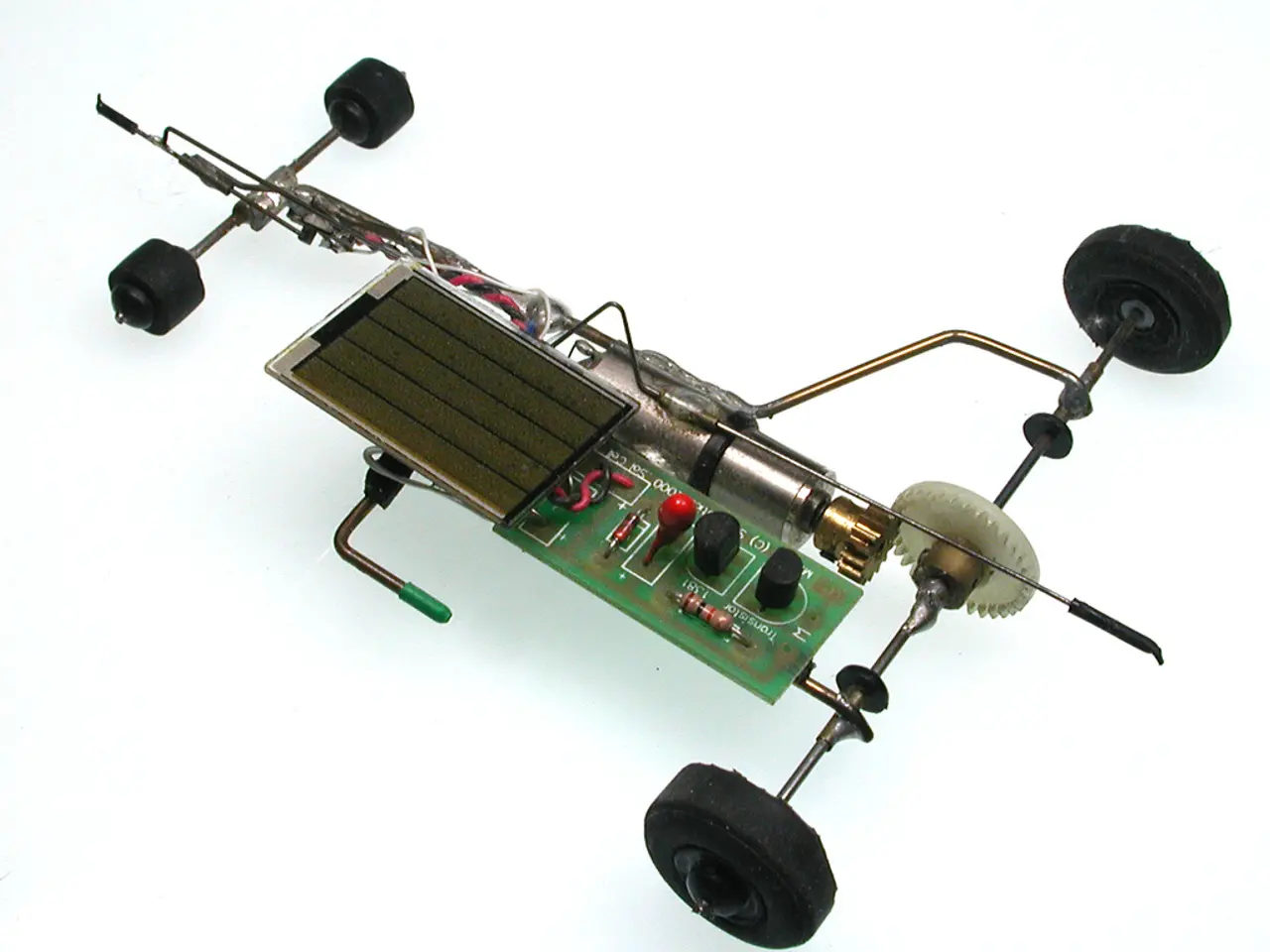Electrification of vehicles gains adaptable features through the implementation of Digital Twinning technology
In the realm of electric vehicle (EV) development, digital twins are making a significant impact. These virtual replicas of physical EV systems serve as powerful tools for design, development, testing, and debugging.
A digital twin is a continuously updated virtual representation of a physical object, system, or process. In the context of EVs, it mirrors the electronic control units, battery management systems, and power electronics, among others. This virtual model allows for detailed simulations and real-time performance monitoring, enabling engineers to validate designs, identify and debug integration issues early, and iteratively optimize system performance without the need for costly physical prototypes [1][2].
In the realm of system integration and optimization, digital twins provide continuous feedback and scenario analysis. They enable exploration of 'what-if' situations, testing of new electronic architectures, and refinement of interactions among subsystems under realistic operating conditions. This agility in handling supply chain uncertainties and acceleration of the innovation cycle are achieved by enabling rapid iteration and virtual testing of hardware-software integration before physical deployment [2][3].
Real-time data synchronization with actual vehicles supports remote diagnostics and predictive maintenance, improving reliability and safety while reducing downtime and costs [1][3]. Advanced simulation platforms, supporting digital twins, seamlessly bridge virtual and physical testing phases, ensuring traceability, multi-domain integration, and enhanced collaboration across the vehicle lifecycle from concept through deployment and operation [3][4].
Digital twins can help detect integration issues early, such as communication delays and CAN bus errors, when multiple electronics must work together. They can simulate edge cases and fault conditions that are hard to recreate physically [1]. This comprehensive virtual ecosystem accelerates debugging and system validation, thereby shortening development time and improving EV performance and efficiency overall [1][4].
The adoption of digital twin technology is not limited to the automotive industry. It is widely being adopted in various fields, including manufacturing, healthcare, construction, and smart cities [5]. As the world continues to embrace the era of digital transformation, digital twins are set to play a pivotal role in shaping the future of technology and innovation.
References:
[1] Siemens. (2021). The future of EV development: The role of digital twins. Retrieved from https://new.siemens.com/global/en/products/industries/automotive/electrification/the-future-of-ev-development-the-role-of-digital-twins.html
[2] Bosch. (2021). Digital twins in electric vehicle development. Retrieved from https://www.bosch.com/us/en/about-bosch/news/digital-twins-in-electric-vehicle-development.jsp
[3] Ansys. (2021). The role of digital twins in electric vehicle development. Retrieved from https://www.ansys.com/en/articles/role-digital-twins-electric-vehicle-development
[4] MSC Software. (2021). Digital twin: The future of electric vehicle development. Retrieved from https://www.mscsoftware.com/docs/en/articles/digital-twin-future-electric-vehicle-development
[5] Gartner. (2020). The top 10 strategic technology trends for 2020. Retrieved from https://www.gartner.com/en/information-technology/insights/trends/top-10-strategic-technology-trends-2020
- In the realm of technology, digital twins are making impressions beyond the automotive industry, being widely adopted in fields like manufacturing, healthcare, construction, and smart cities [5].
- The advancements in data-and-cloud-computing have made it possible to create sophisticated podcasts that delve into the intricacies of the power electronics industry, providing insights into its ongoing developments and innovations.
- The finance sector is showing interest in the development of electric vehicles (EVs) and the role digital twins play, viewing it as an investment opportunity within the transportation industry.
- The vast integration of digital twins in the EV industry is revolutionizing the way the entire automotive industry operates, from design and development to testing and debugging, aligning with the broader trend of digital transformation [1][2][3][4].




